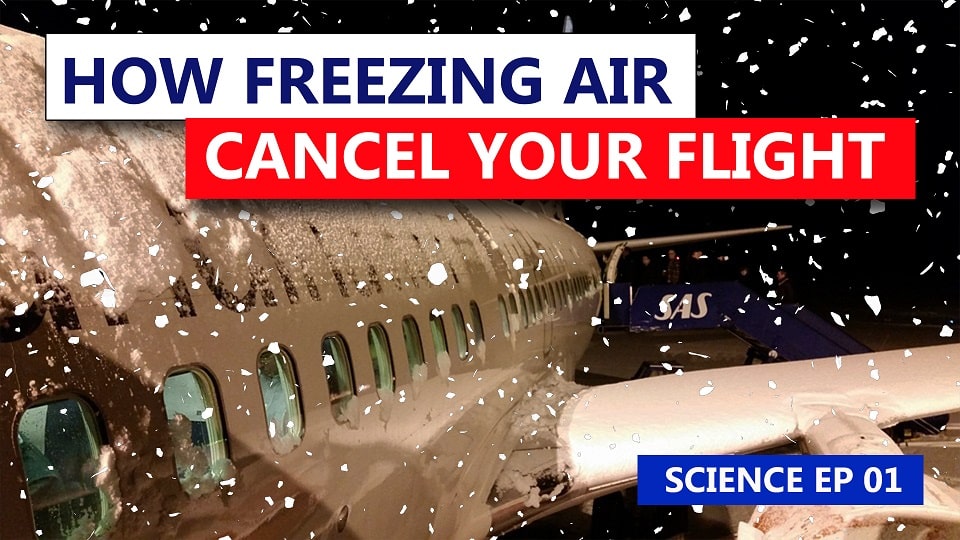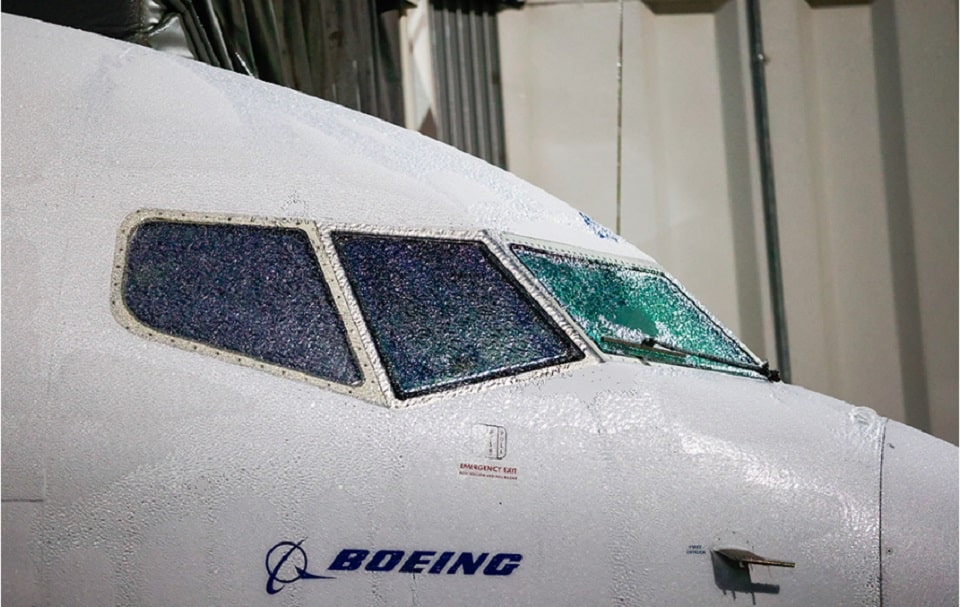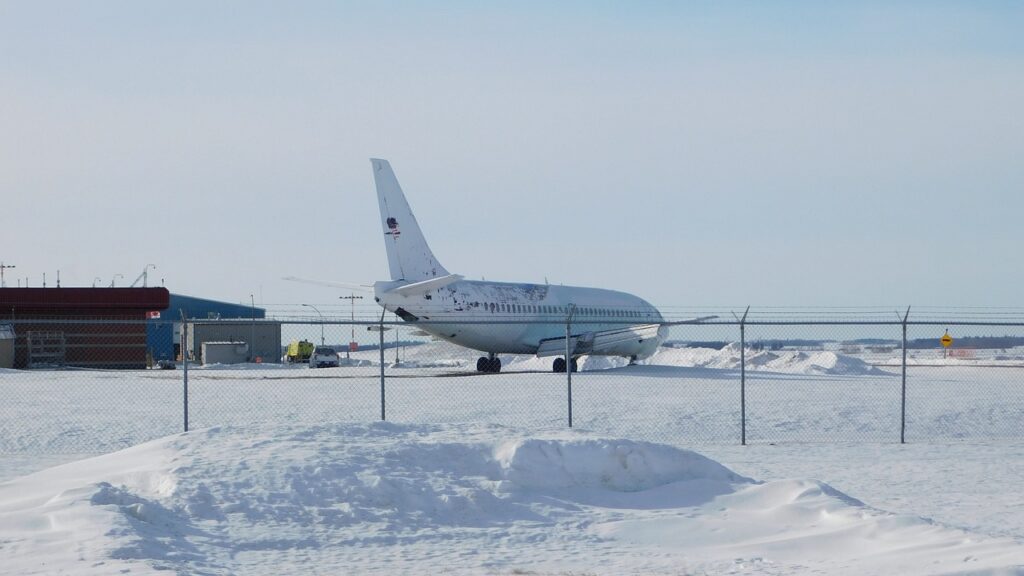Aerospace
What exactly is freezing rain, and why is it so risky for air travel?

Snow is pleasant to many people, but it is terrible for travelers. It is a nightmare for airlines if there is snow at the airport, and the majority of airlines and passengers are affected by the weather. However, it keeps airline passengers safe in the event of a flight cancellation. In this article, we’ll go over this in further detail.
Alaska Airlines pilot Captain Bret Peyton who has worked for airlines for over 22 years has given some of the importance and safety standards for air travel. He goes on to describe how airlines make the difficult decision to cancel flights. But it’s all for a good cause: saving airline passengers.
Airlines often aim for a profit margin throughout the winter and holiday season and get full bookings, but if there is bad weather, they keep profits low and focus on passenger safety.
This is How Alaska Airlines is prepping for winter storms(Opens in a new browser tab)
Why do most airlines, including Alaska, cancel flights during the winter?
Explaining Alsaksa pilots, To begin with, safety is our first priority at Alaska Airlines, and we never operate a flight unless we are confident it is fully safe.
Korean Air plane overshoots runway in the Philippines(Opens in a new browser tab)
Freezing rain occurs when warm, humid air rises over surface-level cold air. The temperature inversion causes super-cooled water droplets to adhere to any surface, including an airplane wing, power cables, and even tree branches.
When an airplane’s wing is covered in icicles, it is unable to take off or land. Although deicing only provides a short-term fix for freezing rain, it prevents airplanes from taking off. Moreover, it might result in aerodynamic fluxes.
Although freezing rain is difficult to foresee, some regions, including Seattle and Portland in the United States, continue to experience it.
Alaska is concerned about traveler security. Most aircraft will be grounded if the condition exceeds the limitations.
We’ve all seen photos of electrical lines covered with icicles. Imagine if that was an airplane wing. We clearly cannot function under those conditions.
Traditional deicing procedures are effective against freezing rain, but only in light situations. Moderate to heavy freezing rain creates conditions that make any airplane unable to fly in.
Because the prediction is so unpredictable over the next few days, we’re not sure how much freezing rain will fall in Seattle and Portland, but we do expect at least some in these two major cities.
Alaska Airlines pilots are well-versed in operating in winter circumstances, and we will not operate an aircraft unless it is safe to do so. To summarise, if the airplane is moving, it is safe to do so.
Air India Pilot Refused To Listen To Younger Female Co-Pilot & The
Weather forecasts aid in airport operations management.
Most airlines cancel flights if the weather forecast indicates that it is unsafe to operate, although in most cases, the airline can operate under continuous monitoring. The ground crew deices the aircraft and prepares it for flight. Furthermore, if the airport is larger, traffic on arrival and departure planes becomes more difficult. Clearing snow on the ground, as well as maintaining ground equipment and aircraft maintenance, is difficult in the winter climate. In terms of operations, airlines need to cancel flights ahead of time so that they can maintain as many planes flying as possible.
Why is it dangerous for airplanes to fly in adverse weather?
There are numerous crashes in the aviation industry that are caused by technical reasons and certain external ones, but weather plays a significant role in safe operations. Aviation organizations such as the FAA and EASA are always advised on safe weather operations.
According to the NTSB survey, most crashes occur in low visibility conditions, and it has also been observed that bad weather makes flight operations risky. We believe that the aircraft is flying above clouds and hence is not influenced by them, but it is still not safe as it approaches the land. Due to the snow, electrical equipment may fail to function or sensors may fail to calibrate accurately. It could cause the tubes to become clogged and the equipment to become frozen during operations.
The aircraft surface is particularly important because it can accommodate ice on the surface, which can cause problems with aircraft operations. In some airports, tracking the ground and landing planes is difficult. The pilot’s job is to moderate-severe winds and cold temperatures. Some passengers may be able to plan another trip if it is safe to do so. If the flight is risky, it must be grounded.
Why is it necessary to deice an airplane?
As part of our safety policy, they commence deicing measures whenever there is snow or ice on our aircraft. Snow or ice accumulation on the wings or tails of aircraft makes them unsafe to fly, thus they must remove it before takeoff.
They have a full fleet of trucks, equipment, and staff ready to go across several stations, as well as plenty of deicing solutions. They work as swiftly as the airport and weather conditions permit. However, deicing aircraft at the gate can result in lengthier tarmac wait times—but safety comes first.
Can a passenger rebook a flight that has already been canceled?
Flight cancellations have few effects on passengers. As many airlines, such as Alaska, resume service on the same routes once the weather returns to normal, passengers are advised to return to the booking website and support center and rebook the tickets.
Because the majority of travelers are affected by the cancellation. Passengers must arrange flights based on the flexibility of the dates. There will be times when you can manage them with the right flight and book it again.
Courtesy: alaskaair.com
Should you wish to hold the value of your ticket(s) and decide to move your trip to a future date, you may place the value of your ticket in your Mileage Plan Wallet for future use or request a full refund by viewing our refund options.
If you enjoyed this article, please share your friends and family about it. keep in touch with Jetline
Marvel

Aerospace
When Ratan Tata was denied entry to the airfield at the Aero India show, he waited

During our visit to Aero India 2019, we had the unexpected opportunity to see Ratan Tata at the event, which was a thrilling moment for us. However, there was a surprising hiccup when the security staff didn’t allow him to enter due to a lack of a security pass.
Despite this, he remained calm and patiently waited for about 20 minutes until a member of the Tata team brought him the required pass, after which he calmly proceeded inside. It was a humbling sight, showcasing his composed demeanor even in such situations.
Ratan Tata ji is not only a renowned industrialist but also a trained pilot, holding a pilot’s license. In 2007, he became the first Indian civilian to fly the F-16 Falcon during the Aero India show in Bangalore—a proud moment for the nation.
His passion for aviation extended beyond flying, as he played a key role in shaping India’s aerospace industry. Under his leadership, Tata ventured into manufacturing and maintaining aerospace components while upholding its legacy of quality. Notably, Tata’s collaboration with Airbus to develop and manufacture the C295 aircraft is a testament to its growing influence in the sector.
-

 Aviation2 months ago
Aviation2 months agoBoeing confirms 797: A New Era for Mid-Size Aircraft
-

 Aviation2 months ago
Aviation2 months agoMicrosoft Flight Simulator Raises $3 Million to Bring Back the An-225 Mriya
-

 Aviation2 months ago
Aviation2 months agoLockheed and Tata Team Up to Build C-130J MRO Facility in India
-

 Airlines2 months ago
Airlines2 months agoQantas Engineers Stage Walkout Over Cost of Living Concerns
-

 Airlines2 months ago
Airlines2 months agoQatar Citizens Can Travel to the United States Without a Visa
-

 Aviation2 months ago
Aviation2 months agoBoeing Offers 25% Pay Increase & Promise to Build Next Plane in Seattle
-

 Aviation2 months ago
Aviation2 months agoQatar Airways bans these new Electronic Devices on plane
-

 Airlines2 months ago
Airlines2 months agoEmirates Ends 28-Year Singapore-Melbourne Fifth Freedom Route










